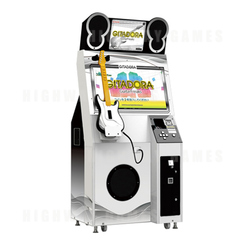It's been a while since I visited Drudge, so I have it up now. And regarding the site itself, that bland site kicks butt on most well-designed sites in traffic. Not tough to copy. It's also very recognizable, so if you use his design thematic for your own site (I'm assuming you're putting together a news site as well, forgive me if I'm wrong), people will quickly recognize it and may conclude that you're trying to emulate him/rip him off.Well, I have my reasons for replicating it. Have to disinfect my machine. Drudge template.
Very Good: An item that is used but still in very good condition. No damage to the jewel case or item cover, no scuffs, scratches, cracks, or holes. The cover art and liner notes are included. The VHS or DVD box is included.
The video game instructions and box are included. The teeth of disk holder are undamaged. Minimal wear on the exterior of item. No skipping on CD/DVD. No fuzzy/snowy frames on VHS tape. See the seller’s listing for full details and description of any imperfections.
In 1999, who had cemented themselves as masters of the arcade with and the recently released and, decided to expand their horizons into games that didn't just involve hip-hop and dance. It began with GuitarFreaks; a game that involved playing a relatively simplified rendition of a guitar by holding down one or more of the three buttons on its neck (colored in red, green, and blue) and using a switch at the bottom to 'strum' it.
Konami knew what they were doing so much, that with the release of GuitarFreaks 2nd Mix later that summer, they also introduced a companion series known as DrumMania (which was, having to use a five-piece set of drum pads attached to the cabinet as instructed). The two games could also be linked for multiplayer in an arrangement they called 'session play'.
Much like other franchises, the series uses a soundtrack with a mixture of original music by Konami's in-house artists, along with songs from J-rock acts and U.S. Or European rock bands (the latter occurs infrequently in recent versions, but was more common in the early era). In 2010, Konami pulled a IIDX and introduced an upgraded version of the franchises known as XG; which brought revamped cabinets with a more powerful sound system, high definition screens, and redesigned instruments (specifically, the guitar now has five buttons, sustains and an effector pedal, and the drumset got two additional drum pads, double bass pedals, and a raised stage platform) In its homeland of Japan (which is, as usual, the ), you'll rarely find matching versions of the two games separated from each other.
In fact, when new versions come out, they now come out at the same time, the versions always compiled the two games together, and the Gitadora (ギタドラ) is used as shorthand to refer to both GF and DM at once, and became the official name of both games beginning on the 2013 version (which also introduced new cabinets best described as white, downsized versions of the XG cabinets. So much so that the guitar cabinet only supports one player now). The series has been most prominently cited as the influence for 's franchises (originally published by RedOctane, a company whose other claims to fame include making third-party dance pads for DDR, publishing the home versions. Later turned into a by before its untimely death in 2011), and (which took Guitar Hero and added drums, plus karaoke built off its work on fellow Konami franchise, and lots and lots of ).
While the first GuitarFreaks got a U.S. Release, it flopped. Konami hasn't officially released the series in America since: when faced with the aforementioned competition, it decided to play with itself and release the dismal instead, and then played a as the publisher for an arcade version of Guitar Hero. Okay, let's start!



Are you ready?.: Early GF mixes had an announcer say things like 'Good!' When reaching certain combo counts (like DDR). Later mixes only have the announcer talking during song selection, and not at all during actual gameplay (like Beatmania).: Early mixes of GuitarFreaks had Extra stages that are played if you do well enough. Starting with GF 4th, Encore stages are also playable if you do well enough on the Extra stage. Early DrumMania mixes actually had no Extra and Encore stages until DM 3rd.
Konami
Starting with GF/DM 10th/9th, any song can be selected as the Extra stage but only the actual Extra stage songs (usually colored red) will let you play the Encore afterwards. And from GF/DM V3 onwards, throughout the 'life' of a mix, new bosses are cycled in as the extra and encore.: First in 2005 with the shift to the 'V series' (beginning with GF/DM V, then V2, etc. This also fixed the long-standing issue of DrumMania always being one number behind its brother series).
Gitadora Guitarfreaks & Drummania
Then we have XG, which ran in parallel with the V series as a (kinda like IIDX) for two versions until it was phased out (GF/DM V7 and V8 just used the content and portions of the UI from their XG counterpart grafted onto the legacy engine/gameplay). Now we have the shift to 'GITADORA' as the name of the series for the newest release in 2013 (which, for all intents and purposes, is XG4).